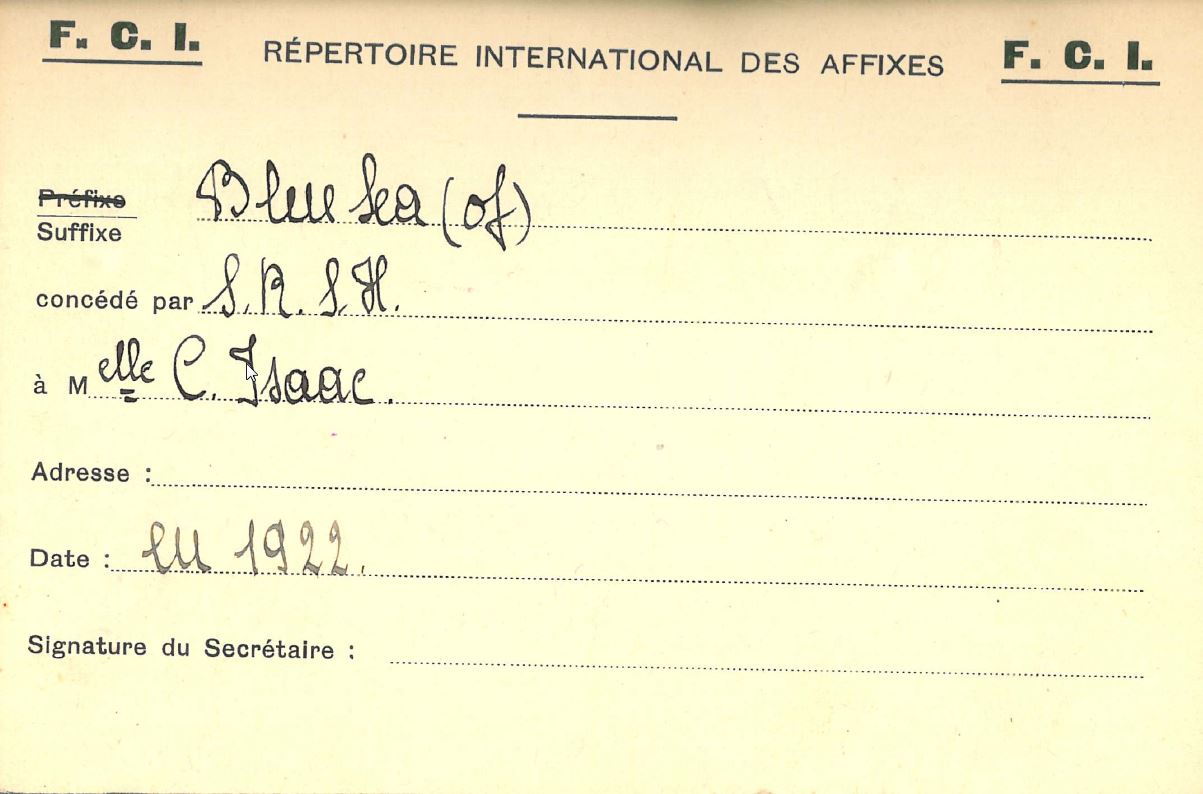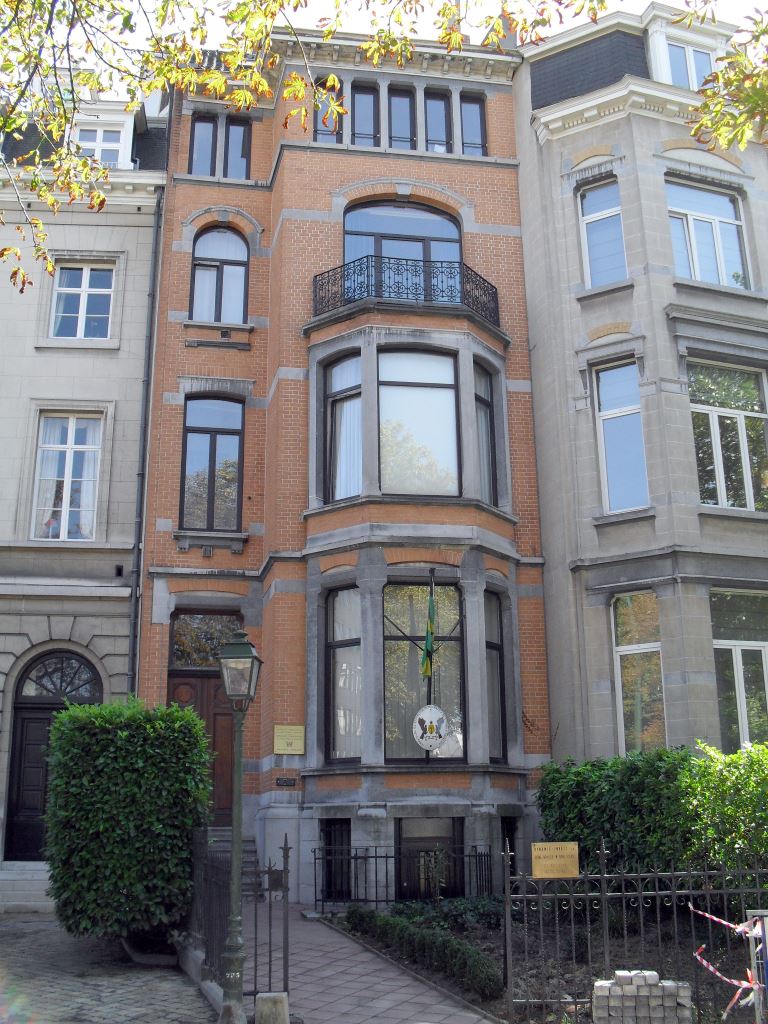At the General Assembly of 1923 held in Brussels, it is reported that the SKG (Switzerland)
is now a member of the FCI. Eight (8) CACIB shows are celebrated as well as six
(6) CACIT trials, which already shows the intense activity of the members and their
breeders. It is also resolved that the full members have to send the breed standards
of their native breeds in their original language to the FCI. Finally, the international
directory of kennel names is created.


An FCI kennel name, 1922
One year later, in the frame of the Olympic Games in 1924, the FCI General Assembly
meets in Paris. The session is chaired by G-J van der Vliet.
In his report, the Baron Houtart informs that over the last 12 months, five (5)
CACIB shows and nine (9) CACIT trials were conducted. It is interesting to observe
that in that period, trials were more popular than shows. The Union Royale Cynologique
Saint-Hubert, which takes care of most of the administrative work of the FCI, has
registered an amazing approximate total of ten thousand (10,000) kennel names. The
FCI is clearly developing and raising interest in Europe.
Interesting figures: the budget for the period 1924-1925 provides for an expected
profit of 1,922 BEF (48 €) while the registered profit and loss account for the
running period amounts to 1,465 BEF (37 €).
The Assembly makes a decision which will be one of the pillars upon which the whole
system lies: reciprocity. As soon as they are approved, the breed standards
sent to the FCI have to be respected by all the FCI federated members.
1925 sees a historic moment: the Barzoi (Russian Hound) male, “Boldoreff du Zwaenhoek”,
belonging to G. Beernaerts (BE), LOSH 9463, is awarded the very first title of International
Beauty Champion (CIB) thanks to its wins in Paris (1 CACIB in 1922) and
Brussels
(3 CACIB's in Brussels in 1922, 1923 and 1924).
At the General Assembly, held in Madrid following the election of the Count of Lerida
as FCI President the previous year, the Secretary-Treasurer informs about the first
contacts taken with the press.
In 1927, the first two titles of International Working Champion (CIT) are
awarded, as is reported at the General Assembly in Basel (CH).
One year later, in 1928 in Paris, the president Baron Jaubert (FR) and the Baron
Houtart inform that since the last session in 1927, 9 CACIB shows and 11 CACIT trials
were organised. A total of 4 CIB were confirmed by the FCI and more than 12,000
kennel names are now registered with the FCI.
The FCI General Committee is already well aware of the importance for the FCI to
be present, known and recognised abroad. A good way to reach this objective is
to offer special prizes. The Assembly consequently decides on the creation of small
copper plates to be offered or sold.
From 1928, the FCI decides to have copper plates produced. They are offered (2
of them) to the organisers of every CACIB show and CACIT trial. The winning dogs
of a CACIB or a CACIT can receive one if it is offered by the organisers. The FCI
keeps a stock of plates which are available for sale. 154 are sold in 1937 and
333 in 1938. There is a funny anecdote about the existence of the plate: a couple
of years ago, in 2009, the FCI Office was contacted by a Dutch person, dog lover,
who informed us that he had found such a plate on a flea market in The Netherlands.
The current FCI staff was not aware of the existence of it and research had to be
made in the very old minutes of the Assemblies and that is how we found information
about its creation in 1927. The plate had been made by a famous Belgian caster
called Léon “Batardy”. The Dutch dog lover has kindly accepted to send us the plate
he had bought and the FCI Office has managed to have it reproduced in its original
format, shape and look. Such a plate will be offered to one of the winners of the
FCI Centenary World Champion of Champions held in Brussels in November 2011.
The FCI will stop the production of the plate in 1947.
That year, the Société Canine de Monaco becomes an associated member.
The “international specificity” of the FCI cannot be questioned as can be seen from
the requirements to win the title of CIB (two possibilities):
- 3 CACIB, in 2 different countries, under 2 judges OR
- 4 CACIB – 3 different countries – 3 judges
1929, on the occasion of the General Assembly in Brussels, where V. Du Pré acts
as chairman, Yugoslavia is accepted as associated member. A decision which still
causes questions to be put to the FCI Office nowadays is taken: the CACIB can be
awarded at all-breed shows exclusively.
One year later, in Amsterdam, under leadership of Mr Van Lier, the FCI gets one
more entrant: Luxembourg as associated member.


FCI Headquarters, 1929
FCI is situated at Avenue de Tervueren, 175a, Woluwe (Brussels, Belgium)